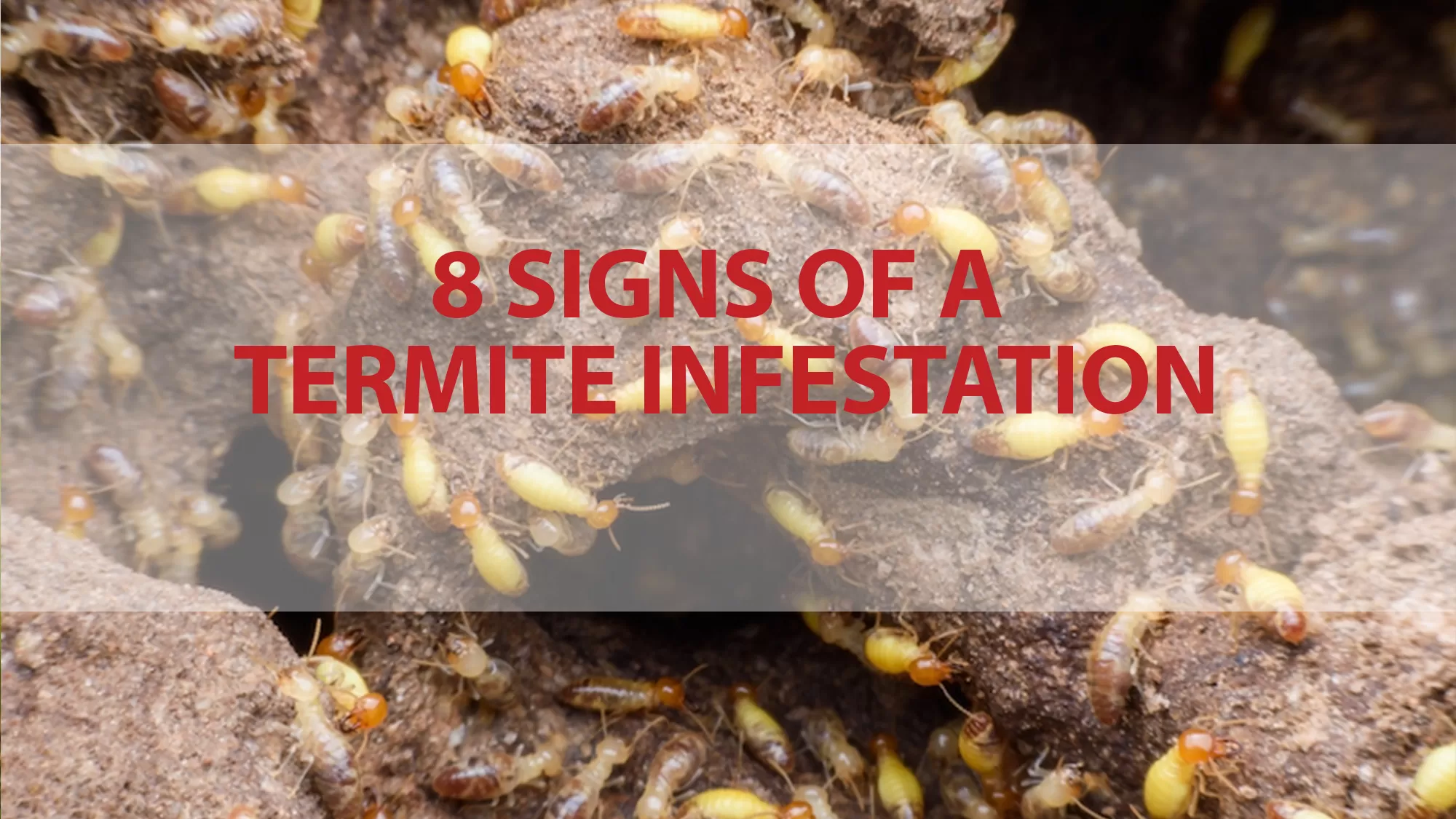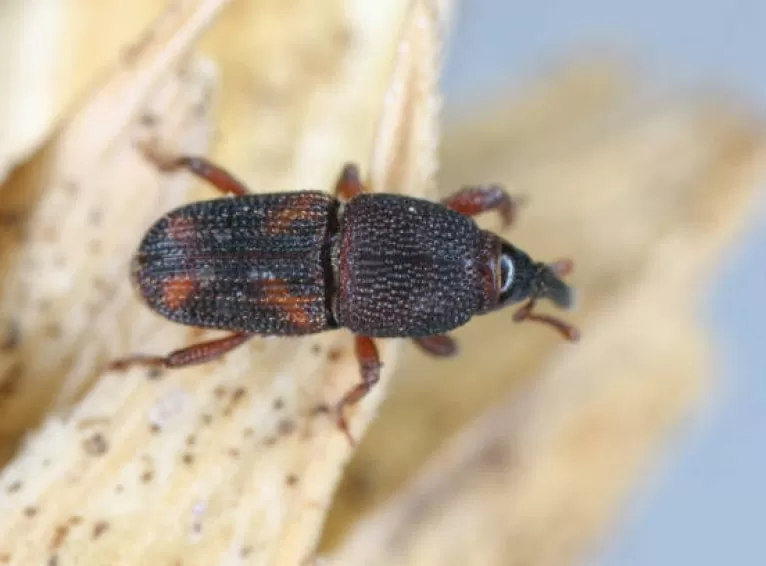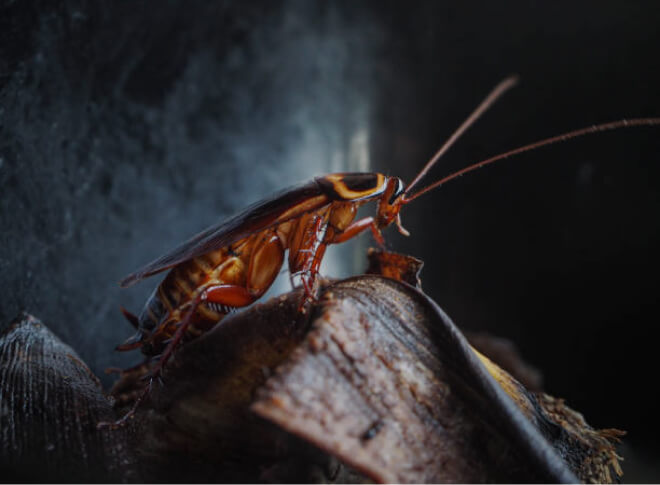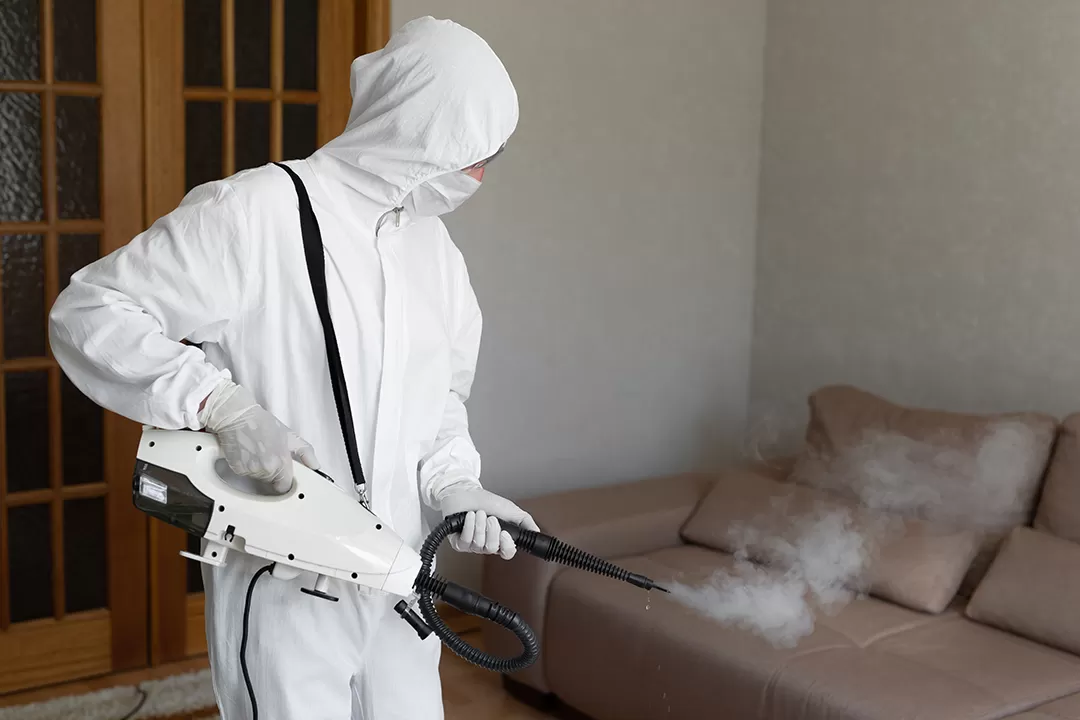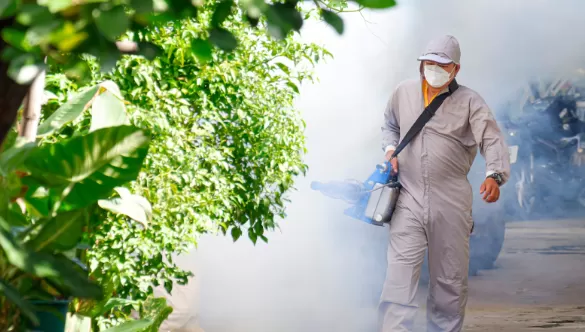Never ever underestimate termites because of their tiny size! Termites may be small insects, but they are surely capable of wreaking havoc. Worst of all, most termite damage is permanent. So, the only way to save yourself from the wrath of these teeny-tiny bugs is to take preventive actions against an infestation.
Unlike most other pests, termites are not very noticeable. They will sneak into your house quietly, feed, and multiply into a colony of thousands. Unfortunately, homeowners often only notice termite damage once these pests have almost completely destroyed their homes.
Want to save yourself the trauma and thousands of dollars worth of repair? Then, you need to be very careful. Actively look out for signs and symptoms of termite attacks, and do not disregard any hints. Here, we have outlined some signs of termite infestation that you shouldn’t overlook. Take immediate action if you see any of these signs to get rid of the termites.
Signs That Indicate That You Might Have a Termite Infestation
Presence of Flying Termites
What clearer sign of a termite infestation than swarmers? Swarmers are flying termites with wings. These comprise both male and female termites that leave their nests in swarms to search for suitable mates that could be residing in your home.
When a particular species of termite might swarm can be different from another. For example, some species swarm in daylight, and others do so towards light sources at night. However, all drywood termites swarm after rain and during a specific time every year.
Even though this is usually one of the first signs of an infestation, termite swarmers are difficult to notice. Swarmers appear once or twice a year and for only around 30 minutes. However, if you ever see swarmers, rest assured there is a mature termite colony nearby. It may even be somewhere within the structure of your own home.
Discarded Termite Wings
Another visible sign of a termite infestation is the discarded wings of these insects. Swarmers may be challenging to spot, but wings are quite noticeable. Swarmers shed their wings after they take flight.
If you have a termite problem, you ought to be able to find piles of translucent termite wings around your premises. They may be lying either inside or outside your house. Discarded wings are not only signs of a termite presence but may also suggest that the termite colony around your property has matured.
Termites swarm only after they have matured (which takes three to five years) and are ready to create a new colony. So, you should be very alarmed if you find discarded wings around the house. This sign warrants a termite inspection immediately.
Mud Tubes Around the House
Mud tubes are telltale signs of termites. Worker termites build tubes with mud and termite droppings in different places. They use their saliva as glue to keep the tunnel together.
Termites use these pencil-width tunnels built from soil to travel and take shelter as they offer protection from the harmful effects of air and sun. Unfortunately, mud tubes tend to spread on the foundation of your house like veins.
Despite being commonly hidden in shady spots or crawl spaces, mud tubes are relatively easy to spot. You may also notice mud tubes in walls, beams, exterior walls, and floors.
Wood Tunnels
Another signature that termites leave is wood tunnels. Also known as galleries, wood tunnels are difficult to identify as they are formed within broken wood or the structure of your home. Not only is this a sign of termite presence, but it is also an alarming indication that termite damage has occurred.
Wood tunnels lead to hollow walls and furniture bases. So, how can you ever tell from the outside? Thankfully, there are now technological devices to help detect these wood tunnels even when there are no physical signs on the exterior. Yes, there are now electronic sound, odour, and infrared detectors that can make termite investigation very easy.
Any sign of weakened surfaces can also indicate termite damage. For example, if you tap on a wall with a screwdriver with force and it shatters, you can be confident that termites have been snacking there.
Chewing or Head-banging Noises
You might hear noises if there is a termite infestation. If you suspect an infestation but do not have excellent hearing, using a stethoscope might help. Wondering what noises to look out for? Well, termites make a quiet clicking sound. Soldier termites signal danger by shaking their body or banging their head against the wood when they sense any disturbance.
If you place your ear against a suspected infested wood or wall, you will be able to hear a clicking noise. You may also hear some chewing noises made by the unwanted pests on your property.
Frass or Termite Droppings
The presence of droppings is a common sign of most pest infestations, and termites are no exception. They leave behind them small pallets of droppings, also known as frass. You might see frass at the entry points of termite nests.
It is recommended that you learn to identify termite eggs so that you can recognise early signs of an infestation. Termite dropping looks like sawdust, but you will notice the difference upon close inspection. Darker in colour, termite frass is a 6-sided pellet that looks like a tiny egg. Indeed, frass is so small you cannot identify it until it forms into a pile around the base of an infested wood or termite shelter. Other wood pests also leave frass, but termite frass is harder and has a rougher texture.
Hard-to-open Doors and Windows
Are your window frames and doors sticking? That may be a sign that termites are tunnelling through your window frames and doors. Surely, moisture or extreme heat can also be the reason why your doors and windows have become stiff. However, if your doors and windows have become hard to open without any apparent cause, it could be the outcome of a termite attack.
When termites feed on wood around your door and window frames, they weaken the structures and add moisture. These lead the frames to warp or shift, making it difficult to open and close a door or window easily.
Termite Holes Damaging Wallpaper or Paint
Termite galleries and mud tunnels are not the only signs you should look out for. When termites reside in your house, they make tiny pinholes or exit holes. These holes are less than ⅛ of an inch in size. They can be made without tampering with the paintwork or wallpaper, but such exit holes are often visible.
Pay heed to any unusual tarnishing of wallpapered or painted surfaces, as these can indicate severe termite damage underneath. Common signs of exit holes can include discoloured or peeling wallpaper, bubbling paint, sunken or dented areas, buckling wood, and narrow winding lines.
Conclusion
Finding termites or termite damage can be a harrowing experience. As horrifying as it may be, there is no incentive for anyone to delay the identification of these pests. Even the slightest suspicion about a termite problem must be taken seriously.
Well, physical sightings of the insect, discarded wings, or its dropping will confirm their presence. You can also look at other signs, such as mud tubes and wood tunnels. As termites feed on wood and structures, weakened wood or chewing noises can indicate the presence of termites. If doors and windows become difficult to open, termites might be a reason.
No matter which of these signs you notice first, do not take it lightly. Termites can multiply quickly and cause costly damages. Call for professional pest control immediately to eradicate the termite population from your premise and prevent further damage.

